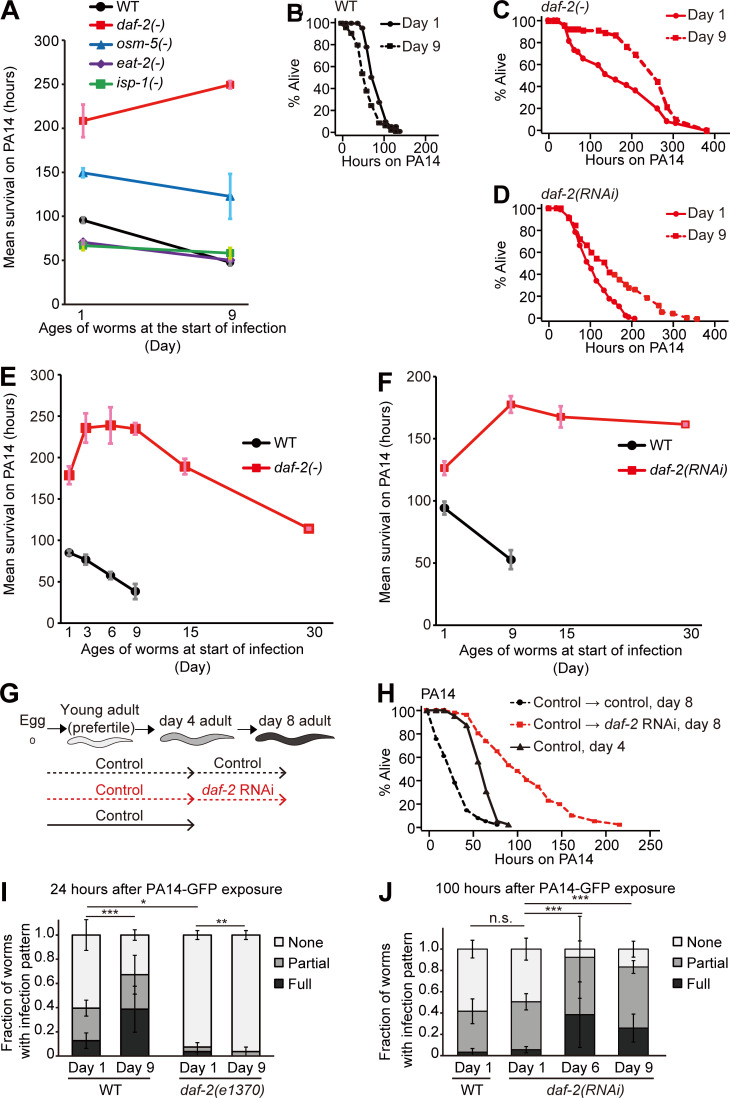Figure 1.
Old daf-2(–) animals display enhanced immune function against pathogenic P. aeruginosa. (A) Mean survival of WT and long-lived daf-2(e1370) [daf-2(–)], osm-5(p813) [osm-5(–)], eat-2(ad1116) [eat-2(–)], and isp-1(qm150) [isp-1(–)] animals transferred from E. coli OP50 to P. aeruginosa (PA14) at day 1 or 9 of adulthood. The mean survival on PA14 was calculated by pooling data from at least two independent experimental sets. (B–D) Shown are survival curves of WT (B), daf-2(–) (C), and daf-2(RNAi) worms (Fig. S1 H; D) transferred from E. coli to PA14 at days 1 and 9 of adulthood. (E and F) Mean survival of WT and daf-2(–) mutants (E) and control(RNAi; WT) and daf-2(RNAi) worms (F) at indicated ages on PA14. At least two independent survival assays were performed. (G) A schematic showing temporal daf-2 RNAi experiments for PA14 shown in H. (H) Temporal daf-2 RNAi (Fig. S1 N) treatment from day 4 of adulthood increased the PA14 resistance of day 8 adults. Unlike daf-2 RNAi–treated worms, during development (Fig. S1, K–M), adult worms recovered from dauer (these worms were also expected to experience decreased IIS; Fielenbach and Antebi, 2008) and exhibited immune aging (Fig. S1 O; see Fig. S1 legend for discussion). (I and J) Semiquantification of PA14-GFP levels in WT and daf-2(–) worms at days 1 and 9 (n ≥ 22 from 3 trials; I), control(RNAi) (WT) worms at day 1, and daf-2(RNAi) worms at days 1, 6 and 9 of adulthood (n ≥ 25 from three trials; J). P values were calculated using the χ2 test (*, P < 0.05; **, P < 0.01; ***, P < 0.001). Error bars represent SEM. See Table S1 for additional repeats and statistical analysis for survival data shown in Fig. 1.

